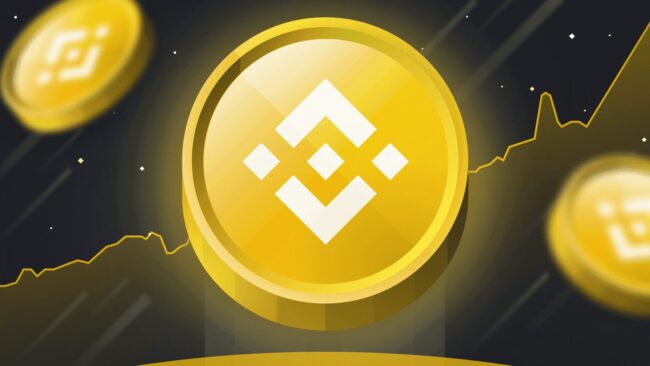No L2s, No Mass Adoption. Period.
ETH Can’t Do It Alone
ETH mainnet is powerful but let’s be honest, it’s pricey AF. $50 swaps, $100 NFT mints. Perfect for whales flexing, useless for billions of everyday users.
That’s why Layer 2s (L2s) exist. They’re Ethereum’s highways: same security, but faster and dirt cheap. No L2s = crypto stays niche. With them, ETH finally goes global.
Why Ethereum Alone Can’t Scale
2021 gas fees were brutal. People spent rent money on swaps. NFT mints sometimes cost more than the art.
Ethereum nailed security, but it was locked behind insane fees. Rollups solved that by bundling transactions, compressing data, and anchoring it back to Ethereum.
Think of ETH as the courthouse. L2s are the highways around it. Same rules, way more traffic can flow.
Rollups
Two main flavors run the show:
- Optimistic Rollups (Arbitrum, Optimism): “Innocent until proven guilty.” Transactions go through unless someone proves fraud. Efficient, but withdrawals to mainnet take ~7 days.
- ZK Rollups (zkSync, Starknet, Scroll): “Math doesn’t lie.” Validity is proved upfront with cryptography. Harder tech, but faster and more secure.
Either way → fees drop from $20 to cents. That’s the unlock.
Why L2s Matter for Mass Adoption
Mass adoption = billions of cheap, everyday transactions. That’s impossible on L1, but normal on L2.
- DeFi: Swapping $50 shouldn’t cost $20. On L2s, anyone can farm, lend, and trade.
- Gaming + NFTs: $5 skins, collectibles, and in-game items actually make sense.
- SocialFi: Billions of likes, tips, and posts daily. Reddit already runs Community Points on Arbitrum Nova.
Without L2s, Ethereum is boutique. With them, it becomes global infrastructure.
It’s Already Happening
- Arbitrum: The DeFi king. GMX, Radiant, Uniswap all live here. Nova powers gaming + social. The BoLD upgrade decentralizes validation.
- Optimism: Playing the meta game. The OP Stack lets anyone spin up an L2. Coinbase’s Base, Zora, Worldcoin all sparks from the same match. Together = the Superchain.
- ZK Rollups: zkSync, Starknet, Scroll are still early, but building for instant, trustless scaling.
Then came Dencun (2024). Ethereum introduced blobs, slashing L2 fees by ~95%. Overnight, “cheap” became “basically free.”
The Messy Bits 👀
L2s are the backbone, but they’re not perfect:
- Sequencers = Central chokepoints. Today, one operator orders all transactions. Risk of censorship + MEV capture is real. Optimism is testing “shared sequencers.” Espresso + Astria are building neutral ones.
- Bridges = Speed vs. trust. Optimistic rollups force a 7 day wait. Fast bridges fix UX but add risk over $2B lost in hacks shows the danger. ZK rollups may cut this, but proofs are still heavy.
- Liquidity = Fragmentation risk. Superchain sounds , but liquidity could scatter across 20 OP chains. Imagine Uniswap split across Base, Zora, Optimism. Without cross-chain messaging, composability breaks.
- Governance = Growing pains. Arbitrum DAO controls ~$3B, but drama over 750M ARB transfers showed fragility. Optimism’s RetroPGF funds public goods after impact bold but unproven long term.
The Road Ahead
For L2s to truly onboard billions, three things must click:
- Decentralized Sequencers → no single chokepoint.
- Seamless Interop → bridging feels invisible.
- Invisible UX → normies don’t care what chain they’re on.
When that happens, no one says “I bridged to Arbitrum.” They just say: “I sent crypto. It was instant. It was cheap.”
Final Take
Ethereum is the air. Without it, nothing runs.
L2s are the engines. They move the people, the culture, the transactions.
No L2s = crypto stays niche.
With L2s = we onboard billions.
They’re not a side quest. They’re the backbone of Ethereum’s future. Period.
Key Takeaways
- Ethereum is secure but too expensive to scale alone.
- L2s bundle transactions and slash fees by 95%+.
- Arbitrum leads DeFi today, while Optimism builds the Superchain for tomorrow.
- ZK rollups are early but promise instant security at scale.
- Main challenges: sequencer centralization, bridge risks, liquidity fragmentation, DAO politics.
- Long-term success depends on decentralization, interop, and invisible UX.
- Bottom line: No L2s, no mass adoption. With them, Ethereum scales to billions.
No L2s, No Mass Adoption. Period. was originally published in Coinmonks on Medium, where people are continuing the conversation by highlighting and responding to this story.
You May Also Like

Why Is Pi Network Token (PI) Up 22% on Oct. 29?

German VDMA cautions U.S. tariff expansion will impact over 50% of machine exports

BNB Price Drops 2% as the Dex Volume Tumbles Cautioning Further Downside
Highlights: The BNB price is down 2% to $1111.46, despite the trading volume spiking 26%. The BNB on-chain demand has slipped, with the open interest plummeting 3% showing a drop in demand. The technical outlook shows a tight tug-of-war, with the bulls attempting to overcome resistance zones. The BNB price is down 2% today, to trade at $1111.46. Despite the plunge, the daily trading volume has soared 26% showing increased market activity among traders. However, BNB Chain has seen declining network activity, with the open interest plummeting, signaling a drop in demand. On Chain Demand on BNB Cools Off The BNB Chain is in a state of cooldown of network activity, which indicates low on-chain demand. In most instances, when a network fails to ensure large volumes or revenues, it means that there is low demand or outflows to other networks. BNB DeFi Data: DeFiLlama According to DeFiLlama data, the volume of the Decentralized Exchanges (DEXs) is down to at least $2.12 billion in comparison to the high of $6.313 billion on October 8, which also means low on-chain liquidity. On the other hand, Coinglass data shows that the volume of BNB has grown by 3.97% to reach $4.95 billion. However, the open interest in BNB futures has dropped by 3.36% to reach $1.74 billion. This reduction in open interest is an indication of a conservative stance by investors since the number of new positions being opened is low. This could be an indication that investors are not so sure about the short-term price outlook. BNB Derivatives Data: CoinGlass Meanwhile, the long-to-short ratio is sitting at 0.9091. This shows that the traders are undecided on BNB price’s next move, as it sits below 1. BNB Price Moves Into Consolidation The chart displays the BNB/USD price action on a 4-hour timeframe, with the token currently hovering around $1111.46. The 50-day Simple Moving Average (SMA) is at $1113, while the 200-day SMA sits at $1129, cushioning the bulls against upside movement. The price has mostly been trending below both SMAs, indicating that the bears are having the upper hand. The BNB trading volume is up, soaring 26%, signaling the momentum is real. On the 4-hour chart, BNB is trading within a consolidation channel. In such a case, this pattern may act as an accumulation period, giving the bulls hind wings to break above resistance zones. BNB/USD 4-hour chart: TradingView Zooming in, the Relative Strength Index (RSI) sits at 44.15, below the 50 level. This shows weakening momentum in the BNB market, and might lead to the RSI plunging to the oversold region if the bulls don’t regain control. In the short term, the BNB price could move up to $1113 resistance and flip it into support. A close above this zone will see the bulls target $1126 resistance, giving the bulls strength to reclaim the $1230 mark. Conversely, if the resistance zones prove too strong, a dip towards $1012 could be plausible. In such a case, this could be a prime buy zone for the risk-takers. In the long term, if the token keeps the hype alive, the bulls may reclaim the $1375 high or higher. eToro Platform Best Crypto Exchange Over 90 top cryptos to trade Regulated by top-tier entities User-friendly trading app 30+ million users 9.9 Visit eToro eToro is a multi-asset investment platform. The value of your investments may go up or down. Your capital is at risk. Don’t invest unless you’re prepared to lose all the money you invest. This is a high-risk investment, and you should not expect to be protected if something goes wrong.